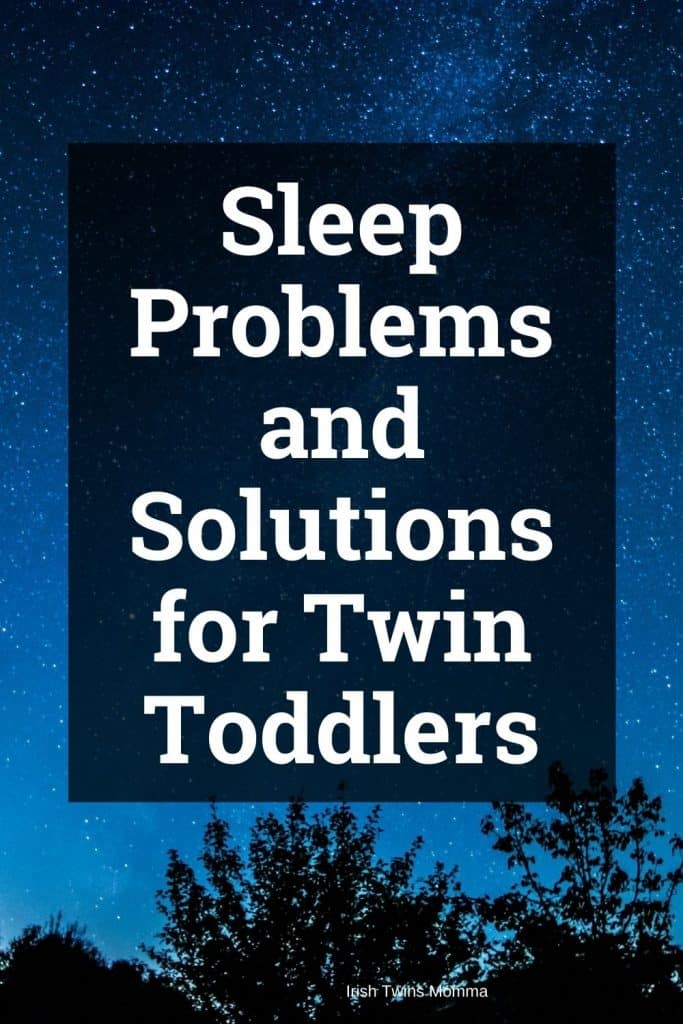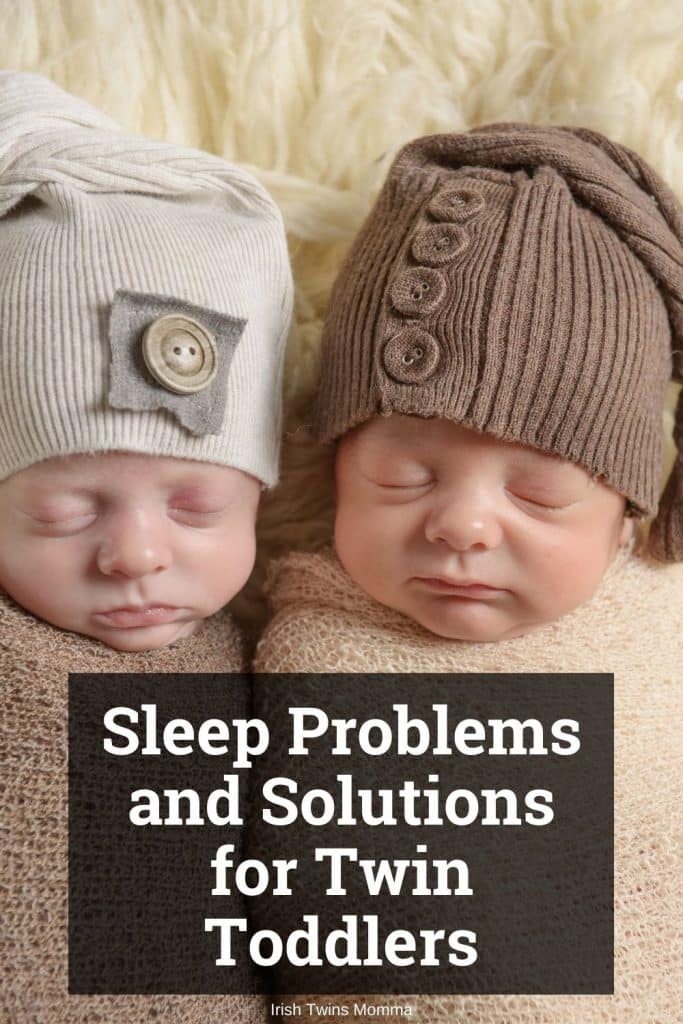This post contains affiliate links. If you click and buy, I may make a commission, at no cost to you. See my disclosure policy for more information.
You’ve survived pregnancy with multiples, and you’ve survived a challenging first year with baby twins, triplets, or more. Now, the fun really begins! Just when you thought things might get a little easier, you have a set of toddlers on your hands.
Some call it “the Terrible Twos” but many parents of multiples find toddlerhood to be an enjoyable, if active, the period of parenting. With a same-age sibling for entertainment, many twin or multiple toddlers are easier on their parents in some respects than their singleton counterparts. However, there are some issues that parents of toddler multiples need to keep in mind, especially when it comes to sleeping.

Toddler Development
A New Sleeping Schedule
One of the biggest benefits of entering toddlerhood is that toddlers—and therefore their parents—are much more likely to sleep through the night. After the first year, most children get 11 to 14 hours of sleep in a 24-hour period which includes naps during the day.
During the second year, the nighttime sleeping schedule probably won’t change much. However, the daytime naps may create some difficult transition periods.
Where babies sleep intermittently during the day, an 18-month-old may only need a two-hour nap in the afternoon.
It can be challenging for parents of multiples to develop and institute a schedule that meets their children’s changing needs. It’s a time for patience and flexibility. As much as you might want to keep your multiples on the same schedule, you’ll have to evaluate each child’s individual behavior patterns.
Bedtime Tips for Twins and Multiples
Use these tips for ensuring smoother slumber:
Establish routines. Creating consistency will help signal your children that bedtime is approaching. Follow the same pattern from night to night — bath, brushing teeth, storytime, and lights out.
Aim to start the bedtime routine about the same time each evening. This approach is also important at naptime. A consistent nap schedule encourages more efficient sleep patterns.
Soften the atmosphere. An environmental change also helps youngsters get in the right mood for bedtime, dim the lights, use a quiet tone of voice, and put away any distracting or stressful items.
Encourage a sense of independence. Your goal is for your multiples to put themselves to sleep, not to require your presence in the room until they drift into dreamland.
Leave the room when they are comfortable and settled, but don’t fall into the habit of having to lie down with them every night.
Crib vs. Toddler Bed
Whether your multiples sleep together in a crib or separately, at a certain point you’ll have to decide that it’s time moving your multiples into beds. It can be a harrowing time for some families. When the restrictions of a crib are removed, toddlers have access to their room, and many a toddler team has destroyed their room’s contents while they were supposedly sleeping.
You’ll probably want to put off the transition as long as you can, but there will come a time when it’s more dangerous to leave them in the cribs.
As they become more adventurous, it’s quite likely that one or all of them will try to climb out of the crib, risking a dangerous fall. To delay that possibility, remove any “climbing aids” such as bumper pads, pillows, or toys, and lower the mattress to the lowest possible position within the crib.
Eventually, however, your toddlers will bid farewell to the confines of their cribs. While some children are ready as early as 18 months old, most parents of multiples wait until their children 2 or even 3 years old, provided the cribs are sized to comfortably accommodate the kids.
Toddler beds have become a popular transition option between cribs and regular beds. Although they are sized proportionately for young children, you may find them an unnecessary additional expense, especially since you have to invest in more than one.
Instead, use regular beds and forgo the rails or frame. Place the mattresses and box springs directly on the ground for safer, low-to-the-ground toddler beds that can be reassembled into regular beds when your multiples are ready for them.

Safety for Sleeping
Out of the cribs, toddlers have increased access to their environment, and a budding curiosity to accompany it. Childproofing your home, especially the twins or multiples’ bedroom, is of utmost importance. Remove anything that can be turned into a hazard.
Together or Separate?
With the transition to beds, you may also wonder whether your multiples should continue to share a room. There are advantages and disadvantages to separating twins or multiples as toddlers, and you’ll have to discover which option works best for your families.
Separated multiples may feel compelled to get up more often in an attempt to be together, yet other multiples can’t seem to fall asleep with the distraction of a playful sibling nearby. It may take some experimentation (and fretful bedtimes) to figure out the best solution
Sincerely,


Holly
The sleep struggle is so real! I do not have multiples, but we’ve still struggled with things like ‘do we have them share a room?’. Great post, thanks for sharing!